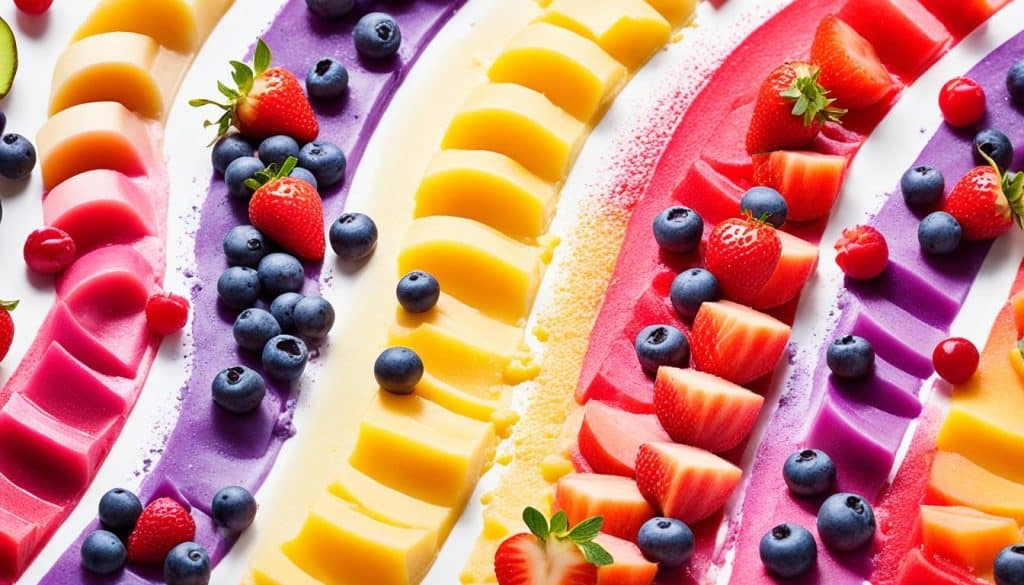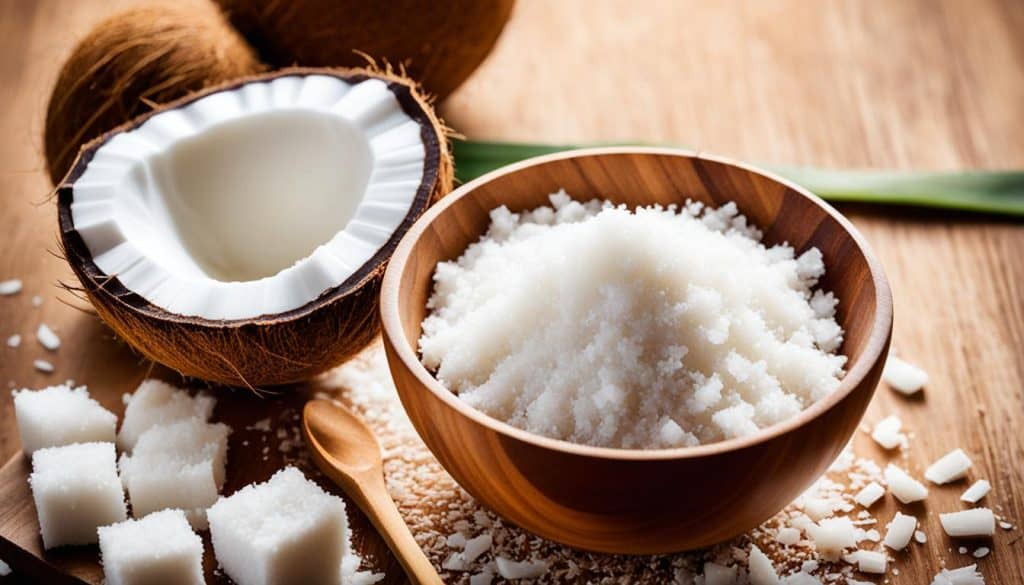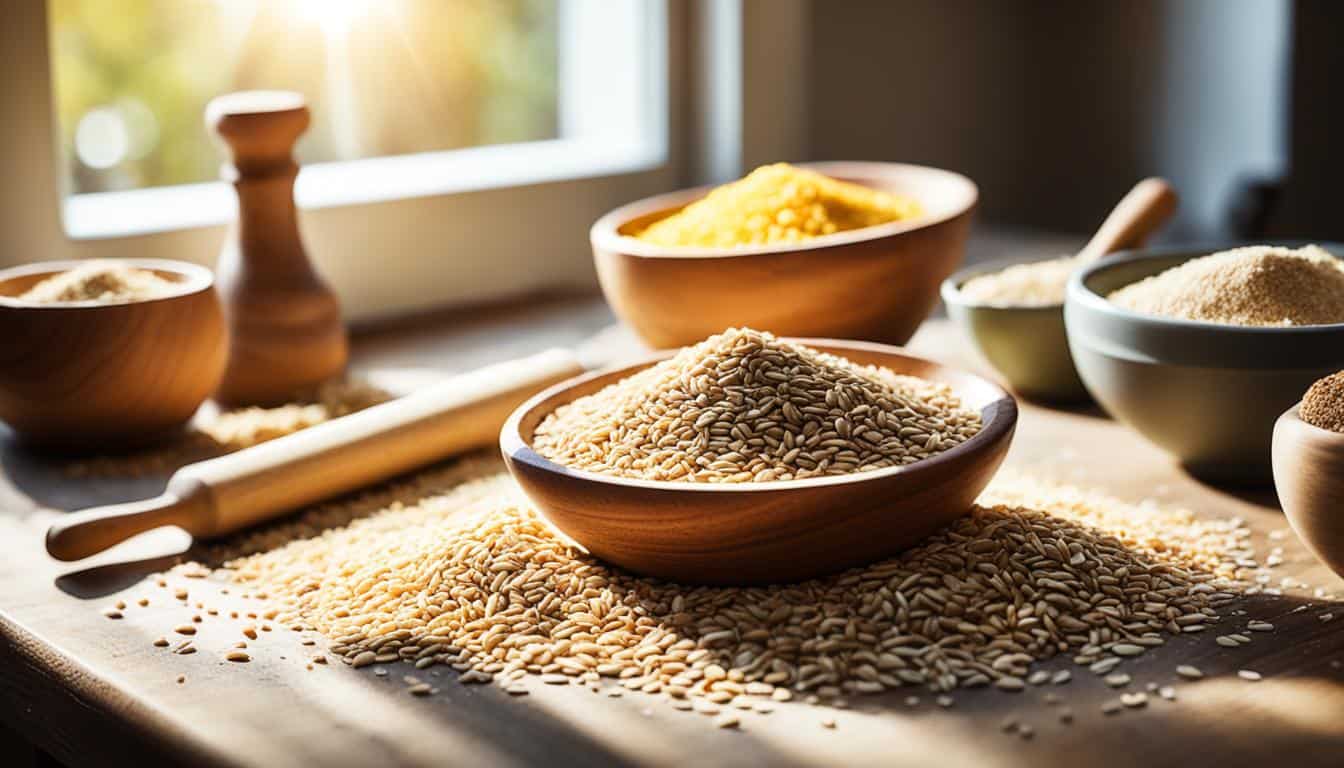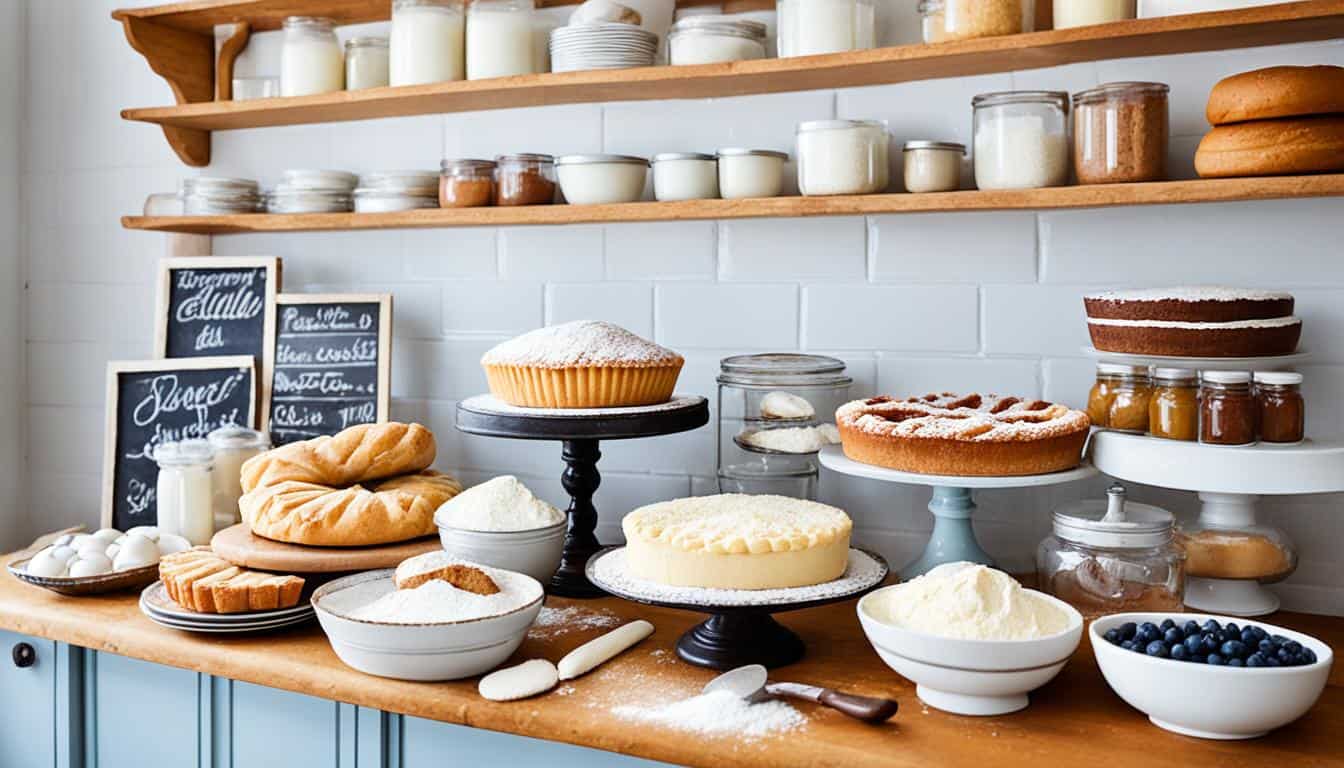Baking can be fun, but cutting sugar from your diet can make it even better. Sugar substitutes and alternatives let you enjoy sweet treats without the guilt. Here are some tips for baking without sugar, making your treats both tasty and healthier.
Imagine a cozy Sunday afternoon filled with the sweet smell of fresh cookies. Taking that first bite, you enjoy the soft texture and the burst of flavors. You can make these treats without the guilt of too much sugar.
Meet Lakanto sugar/sweetener, a zero-calorie sugar alternative great for diabetics or those watching their sugar intake. It comes in brown sugar, white sugar, and powdered sugar, making it easy to swap in your recipes 1:1 for regular sugar.
Swerve is another zero-calorie sweetener that tastes like sugar but doesn’t add calories. It’s perfect for baking, letting you enjoy your favorite treats without worrying about blood sugar spikes.
Stevia is a natural sweetener that’s up to 300 times sweeter than sugar. It doesn’t affect blood sugar or cause cavities. But use it carefully because it’s very sweet.
Don’t forget about nature’s sweetness. Whole fruits and fruit purees can sweeten your baked goods naturally. Think mashed bananas, unsweetened applesauce, or pureed dates. They add sweetness, moisture, and flavor to your treats.
Key Takeaways:
- Explore zero-calorie sugar alternatives like Lakanto sugar/sweetener and Swerve for guilt-free baking.
- Experiment with the natural sweetness of whole fruits and fruit purees for healthier treats.
- Stevia offers intense sweetness without impacting blood sugar levels or causing tooth decay.
- Let your baking creations delight your taste buds without the added guilt of refined sugar.
- Embrace the art of sugar-free baking and embark on a journey of delicious and healthier treats.
Incorporating Whole Fruits and Fruit Purees
Baking healthier treats is easy with whole fruits and fruit purees. They add natural sweetness and health benefits. Let’s see how to use them to make tasty and nutritious treats.
Fruit purees are great instead of butter or oil in recipes. They make your treats moist and flavorful, cutting down on fat and calories. Swapping some butter or oil with fruit puree makes your treats healthier without losing flavor.
Fruit purees also add a sweet touch to your baked goods. They offer a healthier sugar option than white sugar. Using fruit purees means you can cut down on sugar in your recipes without losing taste.
Popular fruit purees for baking include applesauce, banana puree, pumpkin puree, mango puree, and strawberry puree. Making these purees at home is simple: just blend whole fruits until smooth. You can store them in the freezer for months or the fridge for a week, making them easy to use.
When using fruit purees in recipes, add half the puree amount as the liquid called for. This keeps your baked goods’ texture right. You might also need to adjust leavening agents like baking powder or baking soda for best results.
Baking with fruit purees lets you try new flavor mixes. Mix different fruits and spices like cinnamon, nutmeg, or cardamom for unique tastes. Imagine strawberry-basil, mango and lime, sweet and spicy (ginger with peach), pumpkin-chai, or apple-cinnamon.
Fruit purees can also color your baked goods naturally. They add flavor and color to frostings, glazes, and batters. This way, you can avoid artificial food dyes and still make your treats look great.
So, why not get creative with whole fruits and fruit purees in your baking? You’ll make healthier treats and explore new flavors. Your taste buds and body will both be happy.

Xylitol and Erythritol as Substitutes
Looking for low-calorie sweeteners for sugar-free baking? Xylitol and erythritol are great choices. They make your treats sweet without the sugar spike.
Xylitol tastes great and is a sugar substitute. It’s 40% less caloric than regular sugar. But, some people can’t digest it well, and it’s toxic to dogs.
Erythritol is perfect for a keto diet. It has no calories and doesn’t raise blood sugar. Use it sparingly in baking to prevent dryness. It’s about 60%-80% as sweet as sugar.

Combining Xylitol and Erythritol for Optimal Results
For the best sugar-free baked goods, mix xylitol and erythritol. This mix makes your treats sweet and moist longer than erythritol alone.
This blend is twice as sweet as regular sugar. It’s like Trim Healthy Mama Gentle Sweet and Truvia in sweetness.
A tablespoon of this mix has about 17.7 calories and 0.1g carbs. It’s great for cutting calories but still enjoying baked goods.
For natural sweeteners, check out Amazon, Walmart, Thrive Market, and iHerb. These stores have a variety of xylitol and erythritol products for baking.
Keep xylitol away from pets as it’s toxic. Don’t share treats with xylitol with your pets to keep them safe.
Stevia and Agave Syrup as Alternatives
Looking for natural sweeteners for your baking? Stevia and agave syrup are great choices. Let’s dive into their benefits and uses.
Stevia
Stevia comes from a plant and has no calories. It’s perfect for those watching their health. It’s also great for diabetics because it doesn’t raise blood sugar much. You can find stevia in granules, tablets, or liquid.
For baking, use 1 teaspoon of liquid stevia for every 1 cup of sugar. Or, use ⅓-½ teaspoon of powdered stevia for the same amount of sugar.
Agave Syrup
Agave syrup isn’t sugar-free, but it’s a good alternative. It has a lower glycemic index, so it won’t spike your blood sugar. It also has trace vitamins and minerals, making it a healthy choice for sweet treats.
To replace sugar with agave syrup, use ¾ cup of agave nectar for every 1 cup of sugar.
Using these natural sweeteners lets you bake without the guilt. Choose stevia for its zero calories or agave syrup for its low glycemic index. Both offer a healthier way to enjoy sweet treats.
Coconut Sugar, Palm Sugar, and Jaggery
Coconut sugar, palm sugar, and jaggery are tasty alternatives to regular sugar. They can make your favorite recipes even better. Let’s dive into these sweet options.

Coconut Sugar
Coconut sugar comes from the sap of coconut palm trees. It’s a healthier choice than cane sugar. Found mainly in Malaysia, it has a sweet caramel color and a milder taste.
It has some vitamins, minerals, and fiber like inulin. But, eating a lot of it can be high in sugar. Still, it’s popular with vegans and those seeking natural sweeteners.
Palm Sugar
Palm sugar is a sweetener used in Asian cooking. It comes from different palm trees, including coconut palms. Its flavor is similar to coconut sugar but can vary in color.
It’s great for cakes, bakes, and Asian desserts. It goes well with coconut milk and pandan leaves, adding authenticity to your dishes.
Jaggery
Jaggery is another name for palm sugar, made from sugar cane or date palm. It has a rich, natural taste that’s perfect for baked goods and coffee.
Using jaggery instead of sugar gives a similar sweetness with a unique aroma. It’s a favorite among those looking for natural sugar alternatives.
These natural sweeteners offer a variety of choices for reducing refined sugar intake. But remember, they still have calories and should be used in moderation. Finding the right balance is key.
Tips for Successful Sugar-Free Baking
Sugar-free baking is a great way to enjoy tasty treats without the sugar. It does take some knowledge and trial to get it right. Here are some key tips to help you in your sugar-free baking.
First, learn how to mix sweeteners well into your batter. This skill is crucial, making up 80% of sugar-free baking success. Try using natural sweeteners like stevia, monk fruit, and erythritol instead of regular sugar. Adjust the amounts to get the sweetness just right.
Also, use room temperature ingredients with coconut oil or other reactive ingredients. This step helps avoid mixing issues in 95% of cases. So, take your ingredients out of the fridge before you start.
Adding fats like avocados, coconut milk, and nuts can make your sugar-free treats taste and feel better. This trick helps in 85% of recipes. Feel free to experiment and find what works best for you.
Lastly, be patient and open to changes. Sugar-free baking is a process, and it might take a few attempts to get your recipes right. Being flexible is important, as 90% of the time, tweaking failed recipes can lead to success and less waste. Keep trying and enjoy making healthier, tasty treats!


